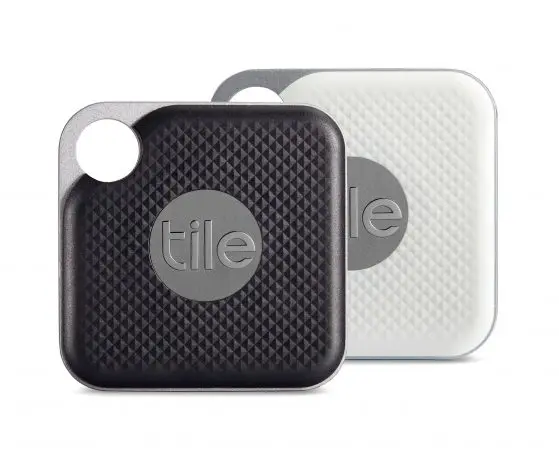Adero CEO Nate Kelly doesn’t hold back when talking about his company’s past mistakes.
Kelly took over as CEO one year ago, back when the company was called TrackR. At the time, TrackR was racing to build a sprawling community network for its coin-size Bluetooth item trackers, allowing us to find our lost keys, bags, bikes, and other precious belongings whether we’d misplaced them at home or some other locations. The more products the company sold, the more powerful the network became.

“I’m a firm believer that if your products don’t make a meaningful difference, there’s no point,” Kelly says. “Life’s too short for all of us to be in here, working our asses off every day to do something that’s not meaningful to people. And it wasn’t meaningful. It just wasn’t meaningful.”
Leaving TrackR behind
Kelly, who previously worked in upper management at HP, Sonos, Tesla, and Facebook, joined TrackR as COO in October 2017. The startup had recently raised $50 million (with Amazon among the backers through its Alexa Fund) and the Bluetooth tracker arms race appeared to be in full swing. Both Tile and TrackR were infusing their item-finding tech into other companies’ products, and TrackR had even started working with Ruckus Wireless, a wireless infrastructure provider, to locate items through municipal Wi-Fi hotspots.
Behind the scenes, however, TrackR was struggling. An inside source told TechCrunch in January that TrackR had been “burning cash at an alarming rate,” presumably to keep up with Tile and fend off smaller competitors. TechCrunch‘s report also said that the company had laid off 42 employees and Kelly had been named CEO.
Kelly says that he had become skeptical that the company could turn things around. Consumers were only engaging with the products in moments of frustration and panic–not a recipe for success, he says–and he didn’t believe the broader tracking network was large enough to be of much use in the near term.
“In spite of all the promises to deliver peace and deliver change to people’s lives, the products across the industry just weren’t doing good,” he says. “We felt like the end was there for that category, and we needed to go off and do something to change the game completely.” He acknowledges that he built a new team almost entirely from scratch, with the goal of creating something different.
Adero’s first product is a departure from the ones that launched under the TrackR brand. Instead of selling individual, battery-powered Bluetooth trackers–usually for $30 or less–Adero now offers $120 kits that include several rechargeable “Smart Tags” and Bluetooth 5-equipped “Taglets.” You’re supposed to attach the Smart Tag to a bag, then stick the Taglets to individual items such as wallets, laptops, keys, or headphones. You can then press the Smart Tag to make sure all the other belongings are inside.

“I think the [TrackR] products were [addressing] people after the moment of anxiety, or fear, or disruption, or anger had already happened,” he says.

“That was the big ‘aha’ for us: Wait a minute, we can put self-awareness and intelligence at the item level to help these items actually take care of us, and organize around us,” Kelly says. “That is a much harder problem to solve than just sticking a Bluetooth tracker in something and putting an app on it.”
Tile retrenches
TrackR’s pivot and rebirth as Adero might’ve been at least partly prompted by archrival Tile, which in terms of market share has run away with the category over the past couple of years. As of September, Tile had sold 15 million units–up from 10 million in mid-2017–and its trackers make up 90% of retail distribution, according to Simon Fleming-Wood, the company’s chief experience officer. (NPD analyst Stephen Baker agreed in an interview that Tile is “way bigger” than its competitors.)
In other words, Tile was clearly winning the race to build the biggest Bluetooth-tracking network, which helps explain why the company continues to invest in the idea. Last January, it partnered with the San Jose Airport to track items across the entire facility. Comcast became a strategic investor in September, announcing that it would start locating nearby Tile devices through its xFi Advanced Gateway routers.

Fleming-Wood confirmed that while Tile saw year-over-year growth last season, sales were lower than expected. That in turn prompted the company to scrap some of its “tangential” hardware efforts and alter its course.
“We didn’t achieve the goals we had, and I think more importantly, we were left feeling like we can’t count on hardware to drive the growth of the brand,” Fleming-Wood says.

More importantly, the subscription plan includes a beta feature called “Smart Alerts,” which will try to tell users ahead of time when they’re leaving something behind. Fleming-Wood says the plan is to offer new kinds of contextual alerts over time.
In fact, the way he describes this service sounds a lot like how Kelly describes the goals of Adero. “Smart Alerts is incredibly important for us,” Fleming-Wood says, “because what it is, ultimately, is our strategy of moving from Tile being just a reactive place that you come to once you’ve lost something, to being a proactive service that helps you not lose things in the first place.”
The future of tracking
Despite the newfound focus on proactivity, neither Tile nor Adero have completely abandoned their earlier goals.
Both companies, for instance, are still interested in embedding their tracking tech into other devices. Tile already works with a handful of Bluetooth-enabled products such as Nomad wallets and Bose headphones, but the subscription program gives the company a clearer way to profit from those partnerships without licensing fees. Fleming-Wood says we’ve only seen the “tip of the iceberg” for these kind of integrations.
“It costs nothing to build Tile into a Bluetooth device,” Fleming-Wood says. “If it has a Bluetooth LE chip, Tile is just a firmware update.”
Adero is also working on integration with other devices, Kelly says, and he hints at a future shift that could allow the company to track existing Bluetooth devices, even if they haven’t explicitly partnered with Adero. Kelly declines to get into the specifics of that claim, but says Adero will share more next year.
“Beyond the embedded strategy, it’s also about being able to activate existing devices in the world,” he says. “That’s something that wasn’t on the radar of the previous leaders or of anybody else in the industry, because it was all about top-line growth, and top-line growth doesn’t come from activating existing devices.”
Kelly also doesn’t rule out the idea of a Bluetooth-tracking network becoming useful in the future, even if it’s no longer Adero’s priority. In recent months, Slovenia-based Chipolo has been quietly trying to band various tracker makers together on a joint network. This would be a lot more effective than lots of competing networks, and Primož Zelenšek, Chipolo’s cofounder and CEO, says he’s already gotten a couple of smaller vendors on board.
TrackR probably wouldn’t have been interested in that kind of collaboration, Kelly says, but Adero absolutely would. Even if Adero has decided that it isn’t in the business of finding lost items anymore, the ability to do so through a community of users could still come in handy.
“I always say that the community network is better than nothing,” he says.
Recognize your brand’s excellence by applying to this year’s Brands That Matter Awards before the early-rate deadline, May 3.